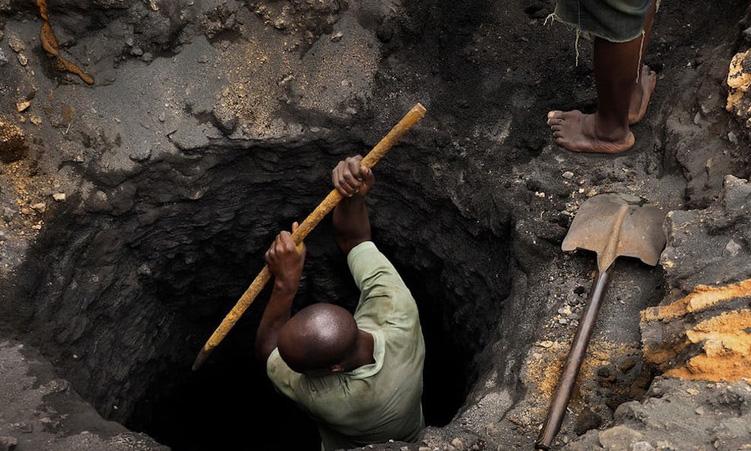WILL the year 2000 go down as the last time people saw the Swakop River reach the ocean? Unless a massive volume of water manages to flow into the river, it is becoming increasingly unlikely that people will ever again witness what is already a rare spectacle.
Not only have the Von Bach Dam and Swakoppoort Dams swallowed up substantial volumes of the Swakop River’s water, sand mining in the riverbed, about 15 km upstream from its mouth, has also become a formidable buffer to its flow. Last month the river came down in flood, only to be stopped at the sand quarries, with excavators working frantically to stop the water from entering parts of the mine by bulldozing sandbanks in the way of the flow.According to former conservationist and Namib-Naukluft Park expert Achim Lenssen, the impact of the mine on the environment has not been scientifically documented yet, although there have been evident changes.Steeper gradients because of water flowing into the pits have increased erosion upstream.He said a bigger concern was that the salinity of the groundwater downstream from the sandpits, which plot owners use for small-scale horticulture, is increasing, making the water more brackish and unsuitable for gardens.Lenssen admitted there were no alternatives to the sand quarries because the sand is ideal for building given its low clay content and, with increased development at the coast, the need for good building sand was increasing.He said construction companies from both Swakopmund and Walvis Bay used it.”The bottom line is that one cannot stop the economy, but the river could be stopped,” Lenssen told The Namibian.He said the only chance for the river to break through to the ocean, was if its flow could be directed to the southern bank, diverting it past the quarries.At present, the main thrust of the river is straight towards the sand pits, which are currently to the right of the riverbed and encroaching towards its centre.If no action was taken, the quarries would cover the breadth of the riverbed, eventually stopping any kind of flow, he said.Lenssen agreed that the Swakoppoort Dam has also played a major role in the amount of water flowing towards the ocean.According to him there has also been a major decline in the number of Ana trees (which grow mainly in riverbeds) downstream from the dam.Rod Braby of the Namibia Coast Conservation and Management (Nacoma) project, told The Namibian that the impact of the sand quarries on the river was a concern, and that Nacoma would look into the matter as the area falls within the project’s mandate.He agreed that finding a suitable alternative sand source would be a challenge.Swakopmund Municipal Manager of Planning, Guenther Huelsmann, said sand mining there started in the 1990s and confirmed that there were no known alternatives offering the same quality of sand.He agreed that chances of the river ever reaching the ocean again were growing slimmer as the mining continues.According to Huelsmann, however, that was not solely the result of the sand pits.He admitted that there had been an increase in groundwater salinity, but said that could have been caused by farmers decreasing the water level by irrigating their crops.”The pits may stop small flows, but if a lot of water comes down with momentum, it could be able to break through to the sea,” Huelsmann said.He acknowledged that the excavators were not happy when the river flowed into the quarries because this put them out of action for a long time.According to him, the excavators have proposed the same plan as Lenssen: to divert the flow towards the south bank, away from the quarries.Last month the river came down in flood, only to be stopped at the sand quarries, with excavators working frantically to stop the water from entering parts of the mine by bulldozing sandbanks in the way of the flow.According to former conservationist and Namib-Naukluft Park expert Achim Lenssen, the impact of the mine on the environment has not been scientifically documented yet, although there have been evident changes.Steeper gradients because of water flowing into the pits have increased erosion upstream.He said a bigger concern was that the salinity of the groundwater downstream from the sandpits, which plot owners use for small-scale horticulture, is increasing, making the water more brackish and unsuitable for gardens.Lenssen admitted there were no alternatives to the sand quarries because the sand is ideal for building given its low clay content and, with increased development at the coast, the need for good building sand was increasing.He said construction companies from both Swakopmund and Walvis Bay used it.”The bottom line is that one cannot stop the economy, but the river could be stopped,” Lenssen told The Namibian.He said the only chance for the river to break through to the ocean, was if its flow could be directed to the southern bank, diverting it past the quarries.At present, the main thrust of the river is straight towards the sand pits, which are currently to the right of the riverbed and encroaching towards its centre.If no action was taken, the quarries would cover the breadth of the riverbed, eventually stopping any kind of flow, he said.Lenssen agreed that the Swakoppoort Dam has also played a major role in the amount of water flowing towards the ocean.According to him there has also been a major decline in the number of Ana trees (which grow mainly in riverbeds) downstream from the dam.Rod Braby of the Namibia Coast Conservation and Management (Nacoma) project, told The Namibian that the impact of the sand quarries on the river was a concern, and that Nacoma would look into the matter as the area falls within the project’s mandate.He agreed that finding a suitable alternative sand source would be a challenge.Swakopmund Municipal Manager of Planning, Guenther Huelsmann, said sand mining there started in the 1990s and confirmed that there were no known alternatives offering the same quality of sand.He agreed that chances of the river ever reaching the ocean again were growing slimmer as the mining continues.According to Huelsmann, however, that was not solely the result of the sand pits.He admitted that there had been an increase in groundwater salinity, but said that could have been caused by farmers decreasing the water level by irrigating their crops.”The pits may stop small flows, but if a lot of water comes down with momentum, it could be able to break through to the sea,” Huelsmann said.He acknowledged that the excavators were not happy when the river flowed into the quarries because this put them out of action for a long time.According to him, the excavators have proposed the same plan as Lenssen: to divert the flow towards the south bank, away from the quarries.
Stay informed with The Namibian – your source for credible journalism. Get in-depth reporting and opinions for
only N$85 a month. Invest in journalism, invest in democracy –
Subscribe Now!










